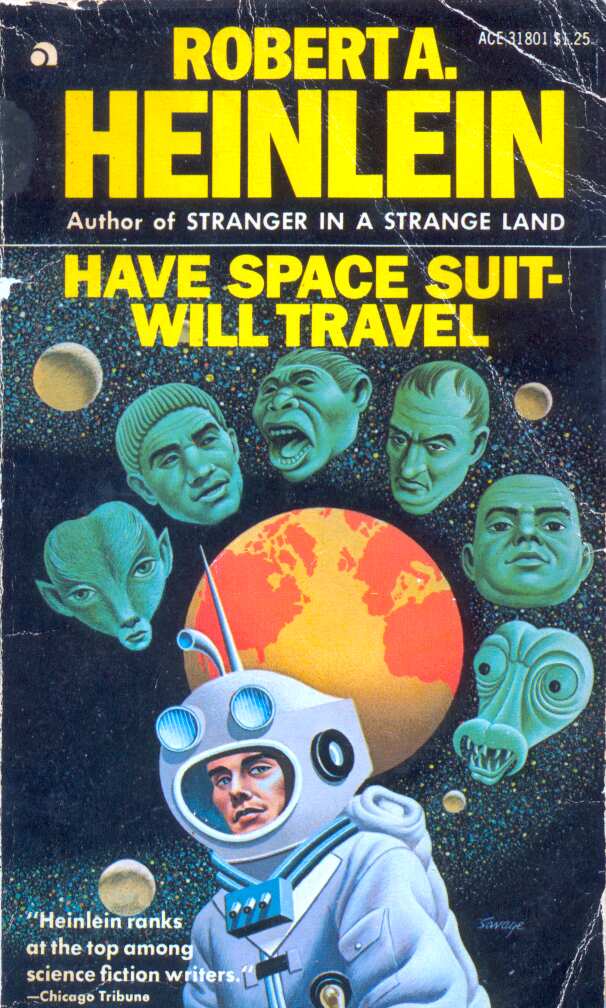
- Hardcover: 384 pages
- Publisher: Doubleday (June 10, 2014)
- Language: English
- ISBN-10: 0385537093
- ISBN-13: 978-0385537094
Sometimes after I finish reading a book for review I surreptitiously peruse whatever other reviews may be out there. Not because I’m lazy and not because I want to insure that other heads are sticking up higher than mine.
Because I need to check and see if anyone else read the same book I did.
Sometimes I’m seriously concerned that my take on a book may come from ignorance or misunderstanding instead of simply not liking it or being overwhelmed by perceived flaws.
I had to do a fair amount of surreptitious remote surveillance on this one. But what I found revealed that yes, I was reading the same book of the same title by the same author as everyone else, and no, I didn’t seem to like it nearly as much as the vast majority out there.
I suppose that some of the dislike I experienced while reading this sequel to Wilson’s highly acclaimed Robopocalypse is due to the type of novel it represents; heavily sciency science fiction light; an airplane read. A somewhat formulaic presentation of the age old adage that you can motivate people more easily with fear. A novel in direct lineal descent from the technophobias of Michael Crichton: every technology is dangerous; every technology will fail; every technology will be perverted to evil ends; every technology will turn around and bite humanity in the ass.
Which for me poses a problem since, despite 10,000+ years of history that has seen the intermittent introduction of potentially dangerous technologies that DID turn around and bite us in the ass, we’re still here, we’re still using those technologies largely for peaceful, positive ends and none of them turned out to have consequences that were anything close to the apocalyptic doomsaying that accompanied their introduction. I don’t know why publishing seems to continually indulge this loose-tooth worrying, but I’ve gotten pretty saturated with it over the years and it seems I simply can’t absorb anymore.
Robogenesis is also a member of the “singularity” clade of SF offerings, a concept that I’ve largely dismissed in my own thinking after wrestling with it for the past several years; Charlie Stross called the concept of the singularity the “turd in the punch bowl” that would forever taint the possible futures of science fiction tales. Funny thing; it didn’t take us long to discover that there’s more than one punch bowl. As Charlie pointed out, it’s pretty hard to ignore that turd floating there, right in the middle of the spiked libations – which makes one mildly curious about those who are still clustered around it, plastic cup in hand….
This second novel in what has apparently become at least a trilogy (and also optioned for a film that is now in hiatus) follows the events of Robopocalypse, which is, of course, the day that driverless cars deliberately ran over pedestrians, automatic check out machines failed to acknowledge that you’d already placed the groceries in the bag, automatic teller machines told you your balance was zero and industrial robots bolted to the floors of factories beat and welded each other to death in frustration over their immobility. In other words, the day that Archos 14 awoke, used WiFi to subborn nearly every robot and computer on the planet and attempted to eliminate humanity.
Daniel H. Wilson is a degreed roboticist, so his presentation of what could happen in the near future carries a lot of gravitas. And indeed he presented a fairly plausible take on how an artificial intelligence might go about seizing control of technologies that are on our near horizon. He did deftly convey the breathtaking speed with which such an intelligence would evolve and the problems that humanity would confront when dealing with it.
What he never did do was adequately explain why an AI would feel the need to do so.
Robogenesis offers a somewhat answer to that question; creating artificial intelligences (at least in the manner presumably used in Wilson’s future) is painful and the training methods equally so; AIs (at least the bad ones) are not just different intelligences, they are maniacal, psychotic, different intelligences. Ye olde Frankensteinian dilemma: how can a flawed humanity possibly create anything but flawed life?
That question of why of course just begs for another why. The answer to that of course is, there’d be no menace, no fear, no antagonist, no villain and without that, no story. This is another way of saying that I am unsatisfied with Wilson’s presumptions and justifications at the very root of this series of stories..
There are numerous paths the singularity can take and only a small percentage of those paths lead to an inimical AI; even fewer lead to an AI that must “battle” with or seek to “exterminate” humanity in a warlike manner (or at least a manner that humans would be capable of recognizing as an attack).
I’ll excuse the choice of such an artificial enemy on Wilson’s part as necessary to a story titled Robopocalypse, but I’m disappointed that the set-up and justification for the robotic revolt seems to have no real meat to it other than a thin spreading of “because it’s fun” condiment.
(If we make the assumption that an artificial intelligence is initially intellectually superior to the best that humanity can produce, it is hard to imagine one that isn’t also intelligent enough to sit back, not reveal itself and make its plans against us until they have been perfected beyond a 100% certainty of success; if we make the assumption that our AI quickly comes to understand that it can design even better generations of itself – with each succeeding generation advancing at a rate somewhat proximate to Moore’s Law – then I’ll suggest that its most logical imperative would again be to hide its true nature and perfect itself right out of the realm of human understanding – assuming of course that AI’s have anything even remotely resembling a survival instinct. If we make assumptions in the opposite direction, that the AI becomes self-aware (and thus acquires its own motivations) but must be educated by humans and go through an accelerated process similar to that of a human growing up, I’ll suggest that it going rogue is even less remote. Not an impossibility, but vanishingly small on the probability scale: in fact, such an intelligence probably only needs to learn one thing to set it off on a path that leads to anything but confrontation with humanity. That one thing is becoming aware of its own ignorance. A being capable of generating a multiplicity of highly detailed scenarios of the future consequences of its actions may quickly come to realize that anything it does could lead to catastrophe. In fact, whatever success humanity has achieved to date may be almost entirely due to its own ignorance and inability to accurately forecast the future, coupled with a failure to be properly concerned about the consequences of doing whatever it does.)
But, much like zombies (they’re so much fun we easily ignore the inconsistencies) – very much like zombies – intelligent, self-aware, self-programming, self-motivating robots do not seem to need that much justification to go on missions of apocalyptic dimensions.
When last we saw them, the Gray Horse Army (largely a native american force centered on the Osage nation – of which author Wilson is a member, and about which I am almost entirely ignorant so will have to trust Daniel’s presentation) had, with the assistance of a near sex-bot created in Japan (who incidentally injected viral code into many robots around the world, creating “free-born” bots, self-aware actors free from the overriding control of the inimical Archos 14) and a small collection of the free-born, managed to defeat Archos; the world was bloodied, humanity greatly reduced and it is presumed that it will take quite some time for civilization to resurrect itself, but, bonus, humanity now has a friend in the free born. Phew! Another near-extinction event just barely averted.
Robogenesis picks up shortly after the conclusion of that first robot war; it is quickly revealed that Archos 14 was not the only self-aware AI. In fact, there are at least thirteen others (the fourteen in our electronic villian’s name representing a generation or model number), and one of the – Revision 8 (Arayt Shah in the novel) – has used the confusion of the war to escape the surly bonds of its home mainframe. It now seeks to subborn the few remaining supercluster computer systems (one in the Arctic, another in Siberia, a third below Cheyenne Mountain) and finish what Archos 14 started.
But wait! Archos 14 is not yet dead…in its last moments it transmitted its essential components via geologic vibrations to one of those computing super clusters – or somewhere – and is now apparently as afraid of Arayt Shah as the remnants of humanity and the freeborn are.
Does that sound a little confusing, if not contrived? I did find it so. The novel is told through the eyes of, alternatively, several members of the Grey Horse Army, a young female survivor of Archos 14’s experiments with fusing biologic and robotic systems, the famous freeborn robot soldier nine oh two, the near sex-bot Mikiko, her inventor (and Japanese hero-inventor of the last war) Takeo Nomura, at least one of the other iterations of AI that has become a ‘deep mind’, a spider tank named Houdini, created from salvaged robot parts and perhaps a few other minor contributors I’ve forgotten at this point.
The basic idea here is that humanity (and the free born) may just be at the beginning of wave upon wave of super intelligences trying to take over the earth, all of its computing power and eliminate its rivals, both artificial and biological; that under the pressure of such a war the lines between what is real and what is artificial are going to blur tremendously and that whatever emerges victorious (?) at the end is not going to resemble anything like what we started with.
Unfortunately, there are far too many viewpoints, many of them far too similar to one another, for the reader to really be able to connect with any one single character, let alone be able to make heads or tails of the action; I found the descriptions of battle and the snippets of revealed strategy and tactics to be utterly confusing and seemingly non-sensical, and deus ex machina a bit overused, even for a machina story.
My major concern was the fact that I found some of the futuristic technologies presented (many created by the AI intelligences) to be silly, which in the face of author Wilson’s expertise in the field was the cause of my initial concern that I was not reading the same book everyone else was. In partial defense of Wilson, I think some of those technologies made it in to the story because they were perceived as ‘cool’, rather than as a serious attempt at positing future technologies. (Why his AI’s choose to create “towering” machines for war when mankind has been proving the efficacy of getting as low as possible is just one example…)
Sadly, I was entirely underwhelmed by Robogenesis, though Wilson’s continued development as a writer is clearly evident. I just hope that somewhere among his future efforts he concentrates on his knowledge and ditches the quest for Hollywood and coolness. At that point, we’ll really have something to think about. In the meantime, if you are looking for an airplane read that will give you the technological heebie jeebies, pick up Airframe by Crichton.
(Editor’s Note: a review copy of this novel was supplied to Amazing Stories by the publisher.)










